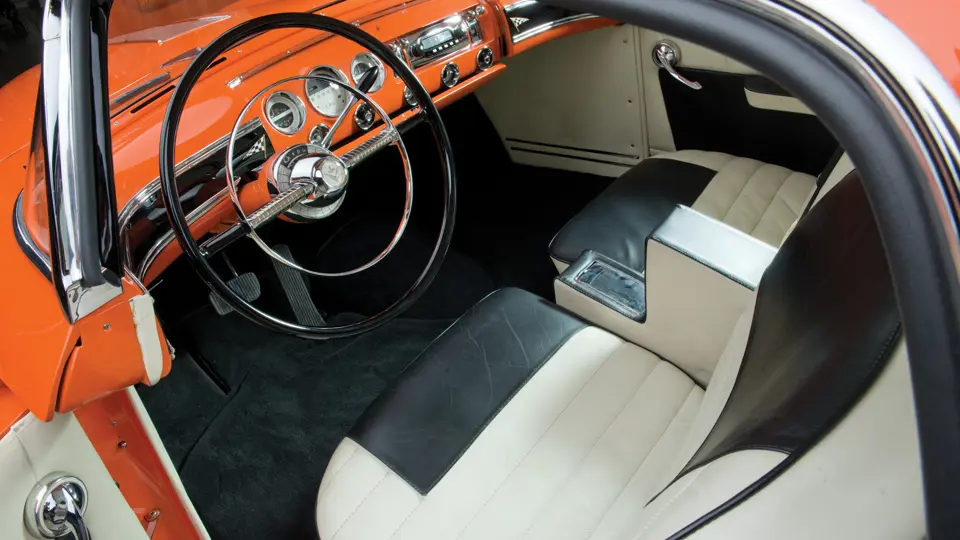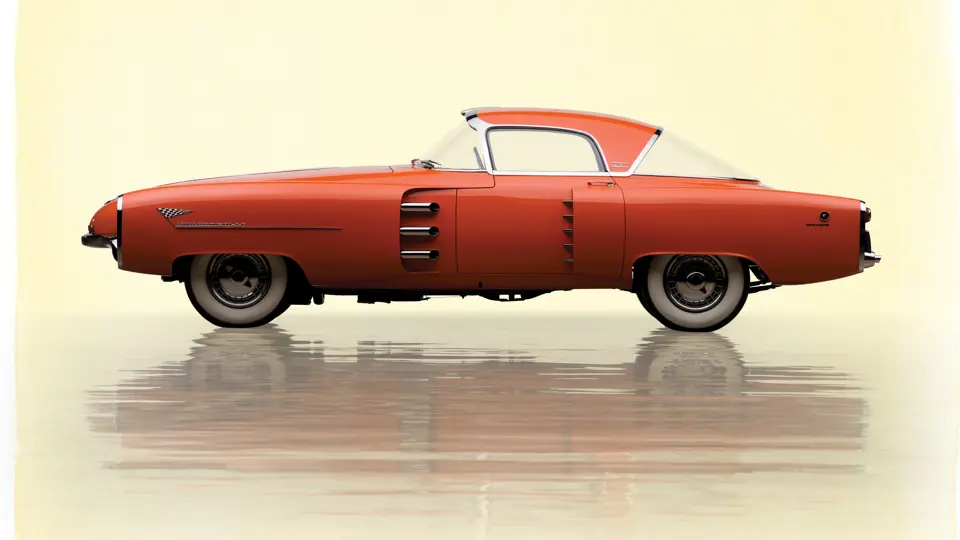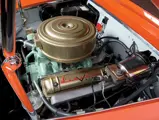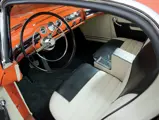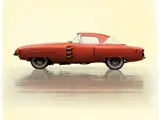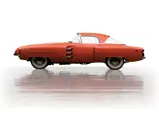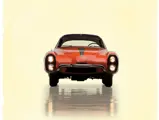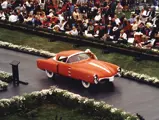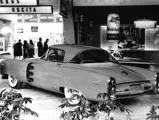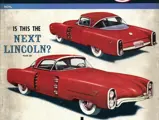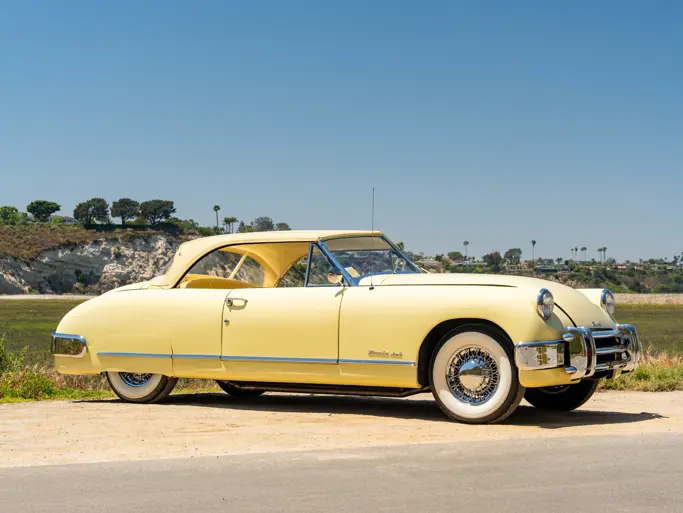
1955 Lincoln Indianapolis Exclusive Study by Boano
{{lr.item.text}}
$1,210,000 USD | Sold
{{bidding.lot.reserveStatusFormatted}}
- A sensation at the 1955 Turin Motor Show
- Formerly owned by Henry Ford II and Thomas Kerr
- Exquisitely restored by Jim Cox in its original colors
- Always an attention-getter and crowd favorite
- Once seen, never forgotten
225 bhp, 341 cu. in. overhead-valve pushrod V-8 engine with a single four-barrel carburetor, four-speed automatic transmission, independent front suspension with coil springs and tubular shock absorbers, live rear axle with leaf springs and tubular shock absorbers, and four-wheel drum brakes. Wheelbase: 123 in.
On his deathbed, Giacinto Ghia instructed his wife to call Felice Mario Boano and have him save the company. It is indisputable that without Boano’s skill and management, Ghia would not have survived to become one of the great coachbuilders of the post-war era. Before that, in the thirties, it was Boano who quietly, and without fanfare, executed many of the great designs of Farina, Castagna, Ghia, Viotti, and Bertone. However, the names affixed to his work were those of the designers.
When relations with Luigi Segre at Ghia grew untenable, Boano, a quiet man, surrendered his interest in the company to Segre and his backers. Yet, Boano’s presence continued among the elite Italian coachbuilders, and it is no surprise that Pinin Farina chose Boano to execute the first design, which he created for series production for Ferrari. It was with Batista “Pinin” Farina that Boano first gained coachbuilding experience, and it was Boano whom Farina chose as one of the small cadre who followed him when he left Stabilimenti Farina to set up his own namesake firm. A few years later, Farina became one of the F.M. Boano Company’s first clients when Boano, in turn, set out on his own.
Boano’s steady, long-term view was evident, as he began to teach his son, Gian Paolo, the family craft. Gian Paolo studied at the Liceo Artistico and then apprenticed in the classic style of skilled artisans at his father’s company. His ideas carried many of the characteristics of contemporary American design, yet they had been softened and refined with Italian style and flair. It is no surprise that, as Boano was on his own, he kept his son on as a full-fledged counterpart and collaborator.
“IS THIS THE NEXT LINCOLN?”
After World War II, Henry Ford II took control of the Ford Motor Company, and he began mentoring projects to bring Ford’s design into the modern era. His interest in European design was well-known, and numerous Italian coachbuilders dreamed of securing a lucrative contract with Ford. Boano was no exception, but he had a secret weapon, an “inside man,” who ended up being a friend that just happened to work for Ford.
As the tale is told, the friend said that if Boano would create a dramatic, exciting, and futuristic design on a Ford Motor Company chassis, the friend would serve as a go-between and introduce it to Ford management. Boano agreed, took up a Lincoln chassis, and gave it to his son, who embarked on a fast-track project to complete the car in time for display at the 1955 Turin International Automobile Show, which was, at the time, the preeminent showcase for Italian coachbuilders.
The Indianapolis was a typical Italian coachbuilder’s project of the era, as it began with little more than some large-scale sketches, a chassis, sheet metal, and tubing. Boano gave it an extended nose, which had no visible cooling air intake and was flanked by vertical quad headlights. The front fenders reached back into the doors, to end in three shrouded chromed faux exhaust pipes, which were balanced by tall air intakes in the forward edges of the rear fenders and five chromed exhaust splitters. The front wheels nearly disappeared under the orange flow of the fenders, and the wraparound windshield was complemented by a huge rear window that had streamlined C-pillars in the roof. Its body was finished in a bright shade of orange—all the better to draw eyes in a show crowded with coachbuilt confections—and it had an interior that was patterned in checkered black and white cloth, in a nod to the famous “checkered flag.”
The completed Indianapolis was every bit the showstopper that Boano had dreamed it would be, even garnering a cover feature in the November 1955 issue of Auto Age magazine, which asked, “Is This the Next Lincoln?” In what must have been a glorious moment for the Boano family, they were offered a contract by Ford, but in a rather odd move, Mario Boano let the offer be known to Fiat, becoming the lever that moved Fiat to commit to establishing their Centro Stile Department and the Boanos as its leaders. As a result, rather than taking up the Ford contract for which they had worked, the Boanos parried it into a new business, running Fiat’s first in-house styling department.
With all the sound and fury done, the Indianapolis itself seemed to have been left behind in the fray.
THE BOANO EXCLUSIVE STUDY
Following its appearance at Turin, the Indianapolis was shipped to the United States and consigned not to Ford Motor Company but directly to Henry Ford II. The car’s history in his hands is not known; however, persistent “word of mouth” suggests that he eventually gave it to his friend, famous swashbuckling actor Errol Flynn. Reportedly, it was later shown in Boston, Massachusetts, where it sustained damage to the interior.
In the 1960s, the car was acquired from an owner in Boston by Felix Duclos, of Manchester, New Hampshire. It sat, unrestored, until 1972. At this time, it passed through a series of short-time East Coast owners and then joined the important collection of Thomas Kerr, who, after acquiring some parts from previous owners, stored it for nearly 20 years, as his personal passion for 1930s Packards took precedence.
Eventually Kerr came to recognize the car’s importance, and he handed it over to his favored restorer, Jim Cox, to be returned back to “the way Gian Paolo Boano would have built in 1955, had he had the time.” The work took over two years to complete, and the result remains breathtaking, as the car is finished in its original nuclear shade of orange, with the correct, eye-popping “checkered” interior. The instruments and power steering, which were originally nonfunctional, were rebuilt to working order. The restoration was extensively covered in Automobile Quarterly, Vol. 41, No. 3, in a feature by the legendary Beverly Rae Kimes, who, as Cox’s wife, had first-hand experience with the work.
The completed restoration marked the beginning of the Indianapolis’s return to the show circuit, after nearly 50 years. As the car was forgotten by many, it astonished at its debut at the Pebble Beach Concours d’Elegance in 2001, where it completed the Tour d’Elegance and won top honors in the Postwar Custom Coachwork class. It continued to garner awards at the Amelia Island Concours, the Burn Prevention Foundation Concours, and the Bethlehem Concours, as well as at Greenwich in 2003, where it received the Most Outstanding Lincoln award.
In the Andrews’s ownership, the Indianapolis made a grand reappearance at the Pebble Beach Concours in 2013, where it again completed the tour and this time won the Lincoln Trophy. This was a significant honor, as this was the year in which the Lincoln was a featured marque at Pebble Beach and the finest examples of all eras could be found lining the coast of Monterey.
Today, the Boano Indianapolis stands as one of the most creative, imaginative, and unrestrained designs from a golden age of Italian coachwork. Gian Paolo Boano’s sole purpose was to attract attention with it, and a half century after it was built, it still does exactly that. Its charm and appeal is accentuated by its restoration, which does things “right” rather than resorting to the whimsical expediency that accompanied Boano’s five-month odyssey from sketch to finished object. This car is flamboyant, exuberant, enthusiastic, and fanciful. It is eye candy, a feast of details, and a feat of unbridled creativity.




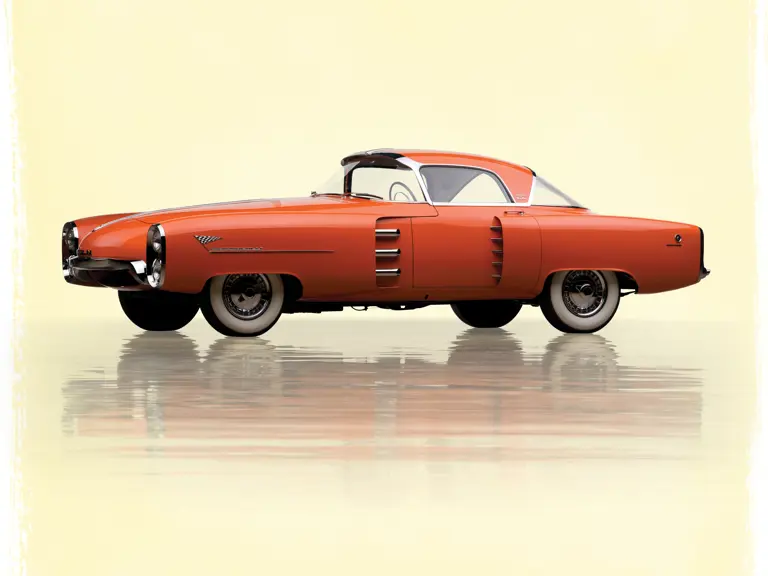
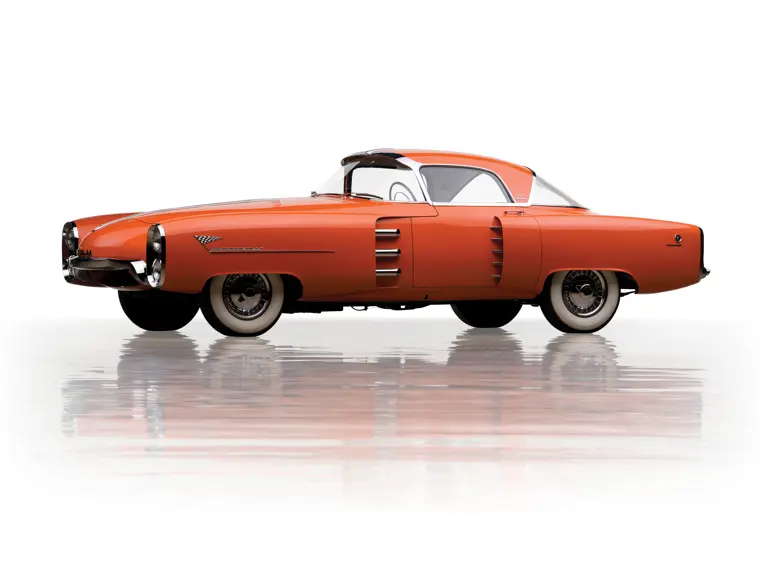
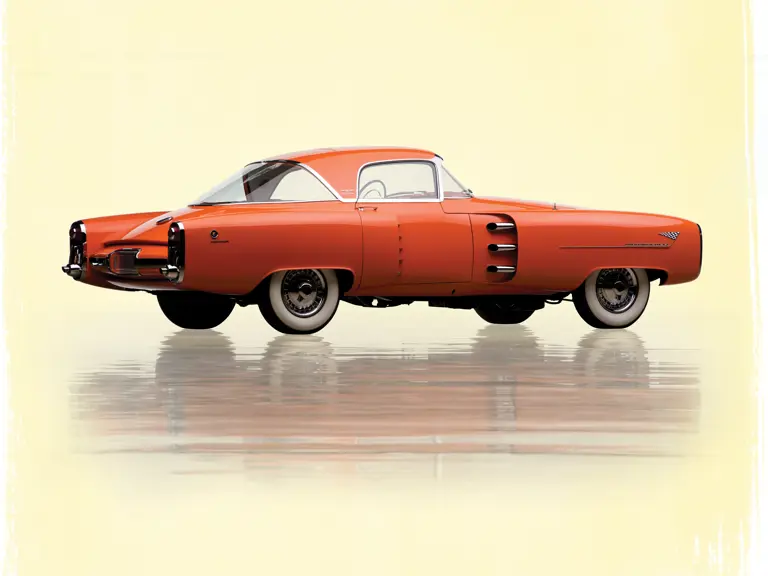
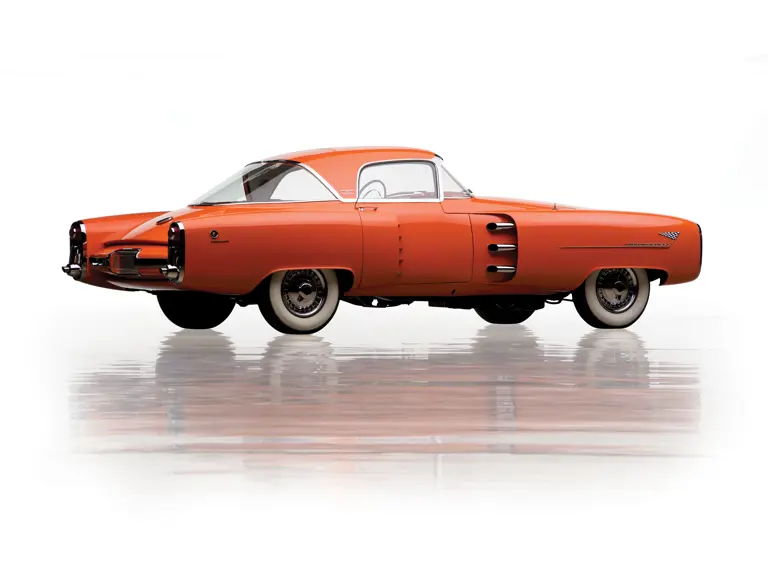

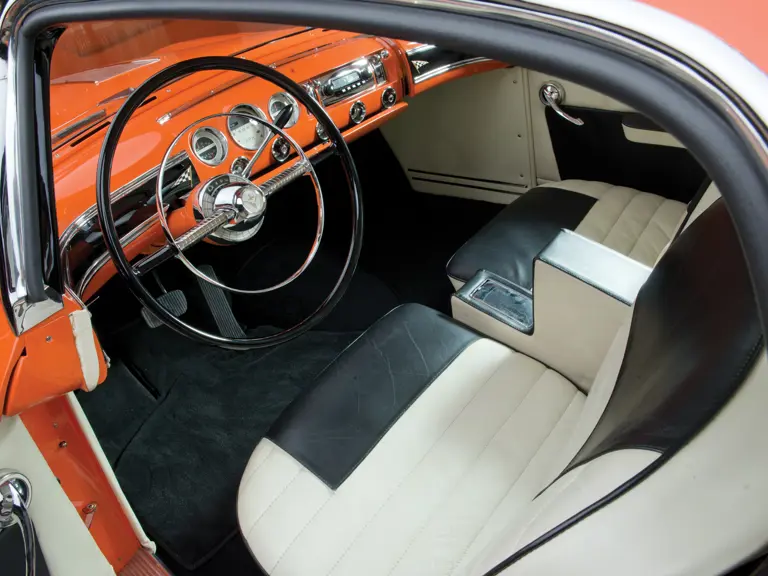
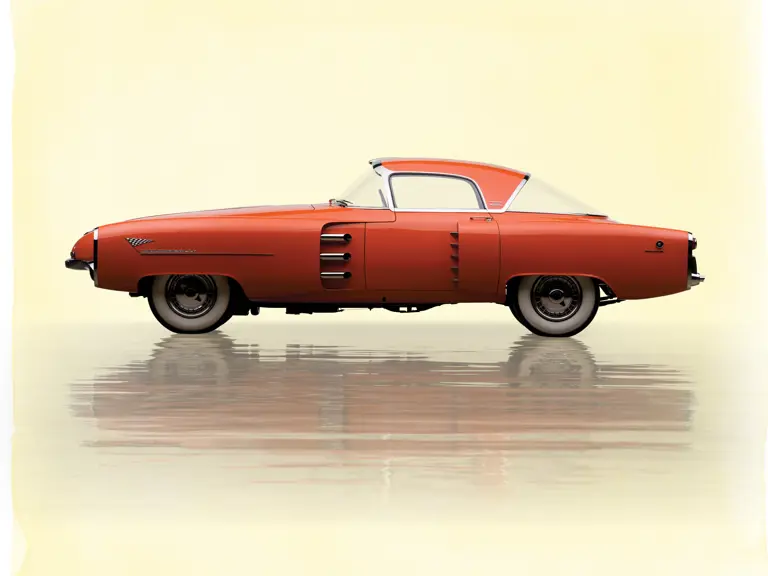
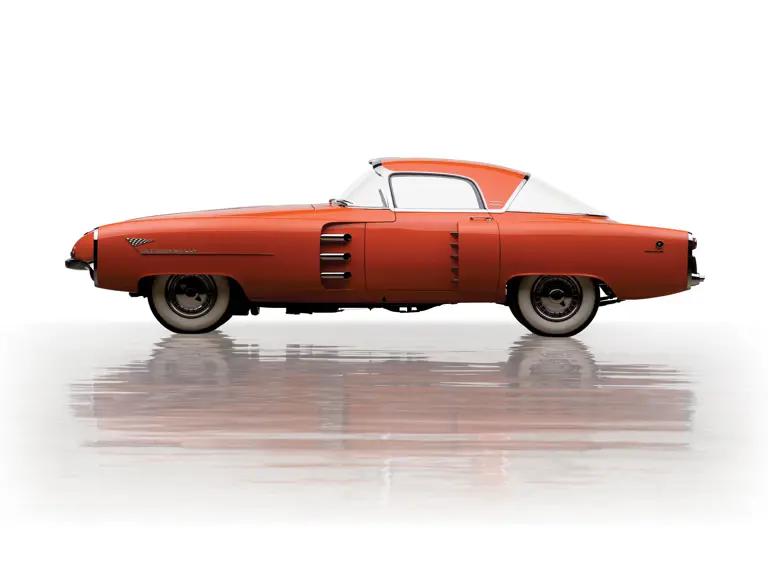
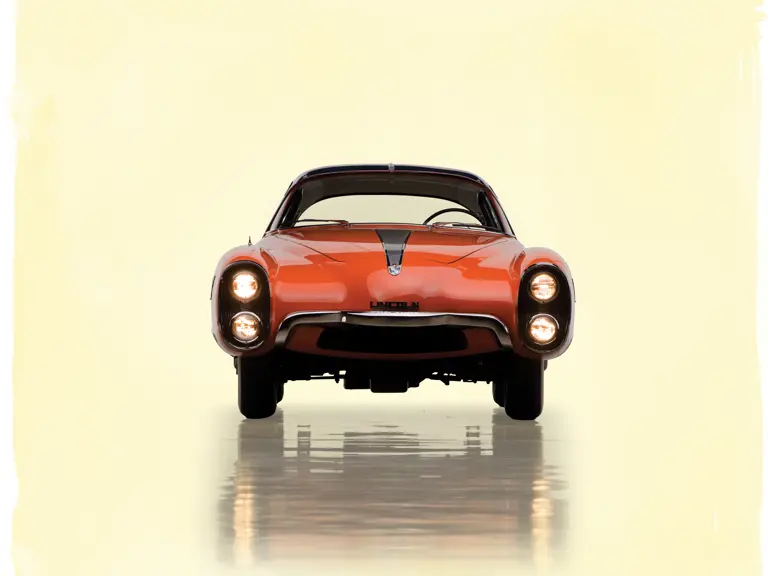
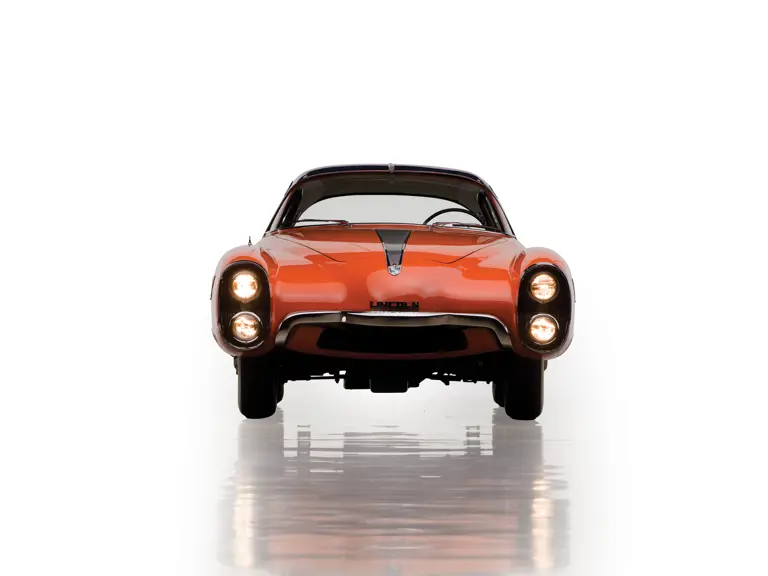
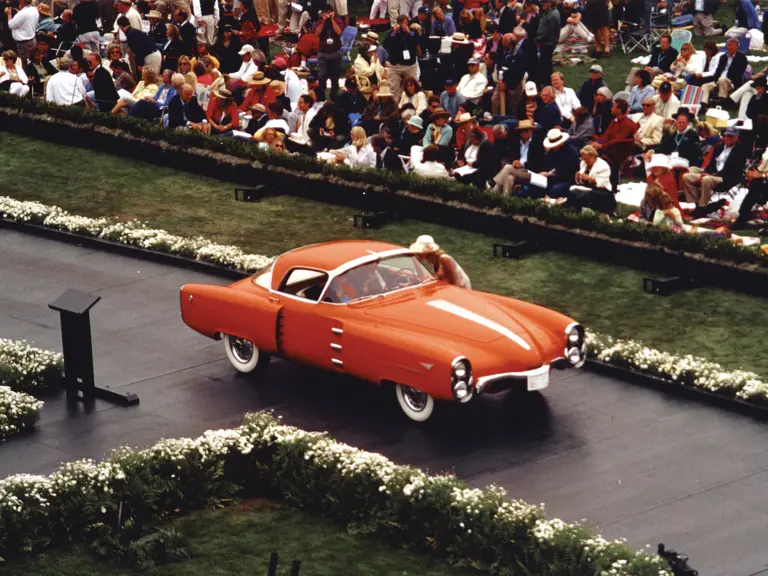


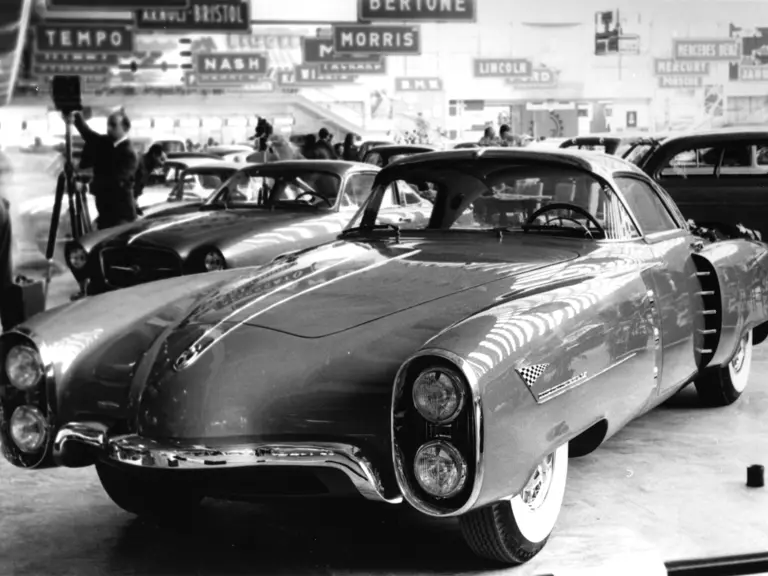
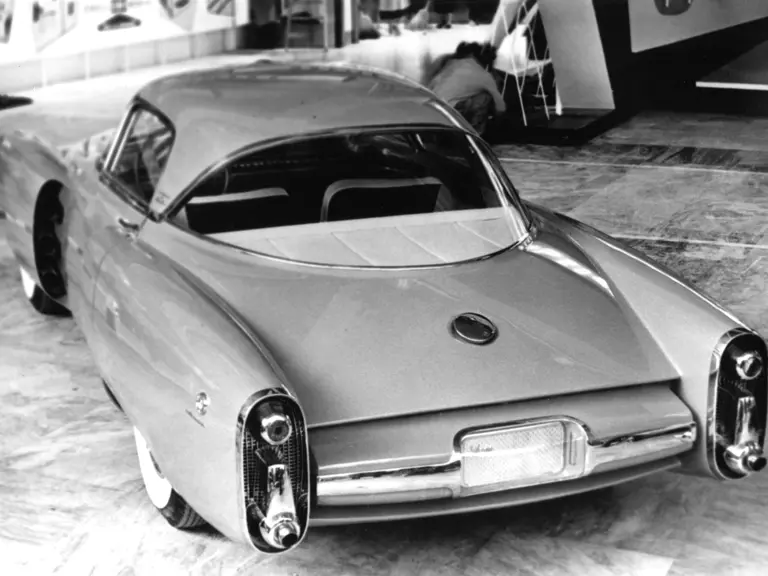
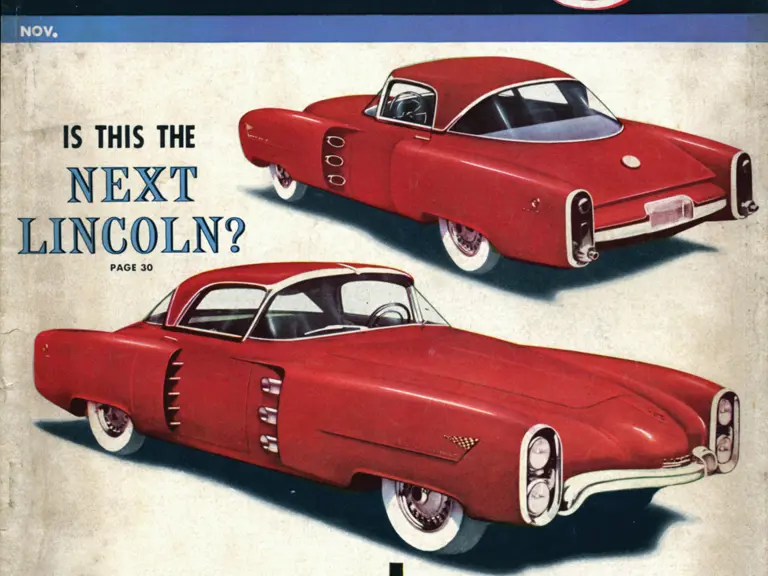
 | Fort Worth, Texas
| Fort Worth, Texas

